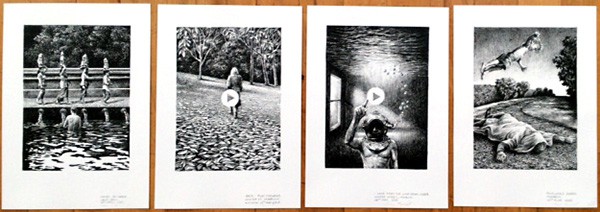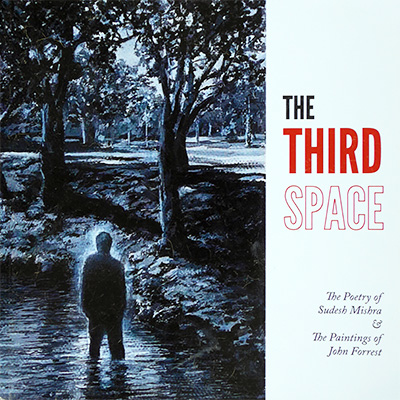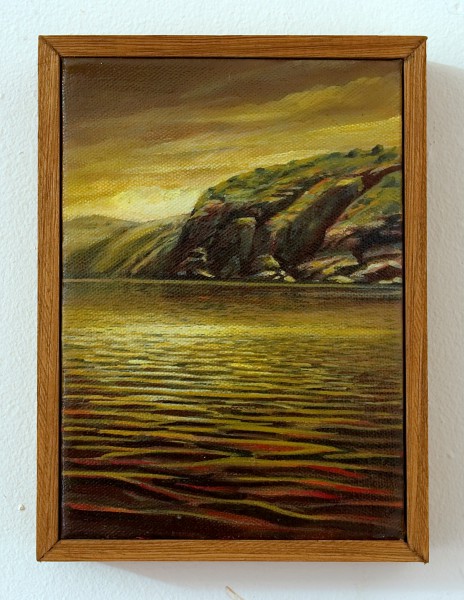News
EXHIBITION ANNOUNCEMENT
JOHN FORREST "DECADE"
7th of April - 18th May 2016
Yering Station - Art Gallery
38 Melba Highway. PO Box 390
Yarra Glen. Vic 3775
Email artgallery@yering.com for more information
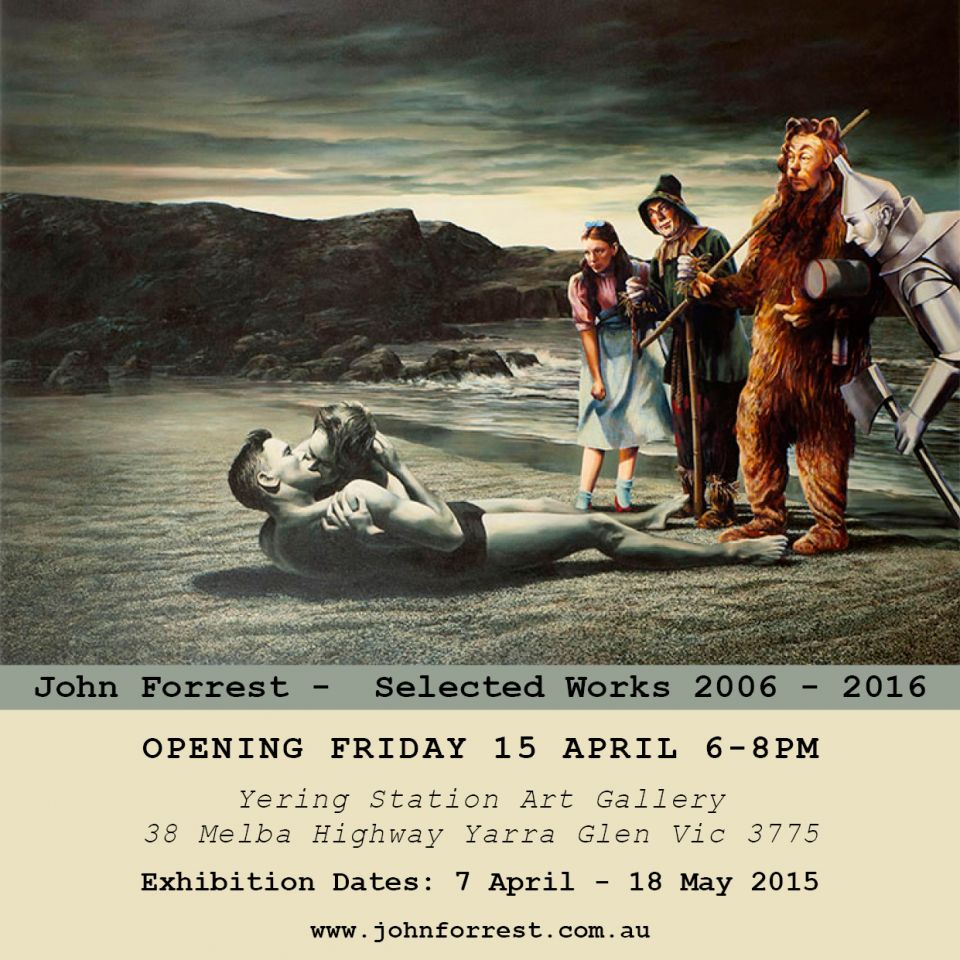
SPIRITS ON THE MOVE 2015 - BALI, GERMANY, GREECE, THAILAND & AUSTRALIA
(ongoing drawings)
Full article here
Artist John Forrest is currently residing in Cologne – the epicentre of the German art scene – and working towards his next exhibition. His latest series of drawings he is calling Spirits on the Move which has been configured as a visual diary that evokes a 1920s ambience within a contemporary context. John describes it as a ‘sideshow sensibility’, akin to the wonderment that you had as a kid when you came across sideshow alley at the show, a freakish visual world of half-human, half-beasts, etc.
The series has been partly inspired by John’s recent experiences in Bali and the unique way the Balinese interpret the Hindu religion and construct their gods. John has completed 80 drawings to date and is working towards an intended 150 in the series.
THE THIRD SPACE 2015
Full article here
The Third Space: The Poetry of Sudesh Mishra and The Paintings of John Forrest John Forrest, R.A. Goodrich, Ann McCulloch, Sudesh Mishra Published by the University of the South Pacific (UPS Publishing)
The Third Space is a unique publication, emerging from a collaboration between poet Sudesh Mishra, painter John Forrest, and philosophers and aestheticians Ann McCulloch and Ron Goodrich. The book features 33 paintings and 33 poems; rather than serving as merely illustrations of the other, the authors/artists have experimented with how each artform can bring further significance to the other and make new meaning. The accompanying essays by Ann McCulloch and R.A. Goodrich provide the reader/viewer with further entry points to this novel form of making meaning, discussing aesthetic, philosophical, historical and political questions endemic not only to the selected art and poetry but to questions governing creative art processes. The resultant work occupies, as the authors propose, the ‘third space’.
Read the Introduction: Introduction Ann McCulloch
Aligning pictures by John Forrest with poems of Sudesh Mishra is not an act of ekphrasis by either artist. The pictures were not executed as an illumination of the poems nor the poems of the pictures. Yet, as readers and viewers of this collection, this collision, of works, are we drawn into a space first articulated by Plato in the Phaidros? Writing, Phaedrus, has this strange quality, and is very like painting; for the creatures of painting stand like living beings, but if one asks them a question, they preserve a solemn silence. And so it is with written words; you might think they spoke as if they had intelligence, but if you question them, wishing to know about their sayings, they always say only one and the same thing (275d).
Are we condemned, in these words of Sokrates, to the “solemn silence” of the painter and the reiterated “sayings” of the poet? On closer inspection, we find that both artists are not beyond appropriating words and images from practitioners within their respective verbal and visual medium. In this book, the poet and the painter have been placed in a dialogic position to each other. In the poem “Capri,” Sudesh Mishra writes of the impossible task for the poet or the painter to capture a certain light truly: Neither brush nor biro chisel nor cello will restore this reverant to form. It will be the perception of the reader and viewer that will find meaning, as there is no attempt in this collection to impose meaning.
What might be there instead is a presentation of a poet and a painter dealing with the “making of meaning.” Both deal in metaphor, which exudes from their perceptions of an object, a place, an idea that, through their artistic “intervention,” apprehends, perhaps, further “meaning.” It is also the processes of creativity, the making of art, the irresolvable dilemma of attempting to create from a world from which one cannot be separate which forms the common subject area. We cannot get outside our consciousness and watch ourselves; thinking about this as most philosophers and artists do is perilous.
Yet Mishra and Forrest are nonetheless driven to do so, and, in so doing, they focus insistently on the complexities of creativity and lost identities as much as they focus on the world of history and politics. In “Capri,” Mishra speaks of that ultimate form which is never really there, is never the essential light you long for, grappa-clear, water neutral, not the metaphor.
Mishra may “play” at not seeing it, but a reader does, almost, due to a denial and its impossible presence. It is, we might think, not the transcendent beauty of the thing itself, but the force of imagination of the viewer who, in not actually knowing the form of what he or she sees, imagines it nevertheless as Forrest does in the accompanying painting, capturing not the metaphor but the light just before and the light just after.
In Essays One and Two, McCulloch and then Goodrich will explore the poetry of Mishra and the paintings of Forrest. Their aim is to draw attention to the artists’ battles with representation. Are these struggles complexities inherent in both artists’ emulations of what appears to be, of turning the world into metaphor or metaphor into the world? And, as they attempt to solve the problems of creativity itself, they end by engaging in a dialogue with each other about the impact of history or family or politics on humankind. They represent the problems associated with representing the subsequent alienation and loss as much as they demonstrate the compensations found in making art.
LOS ANGELES 2014
Worked on a film documentry that centres on the body of "Hollwood Flesh" work, filming will be taken place in Los Angles, Melbourne & Bali.
Film completion date early 2015.
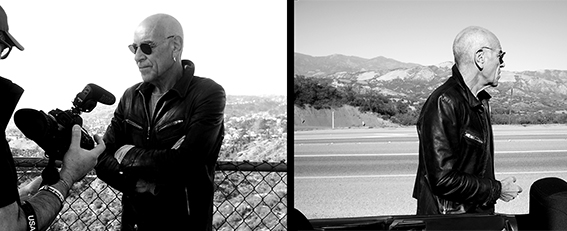
John has started a sketch book of drawings whilst living in second home Ubud, Bali. Taking inspiration from his new surroundings and old school prints.

